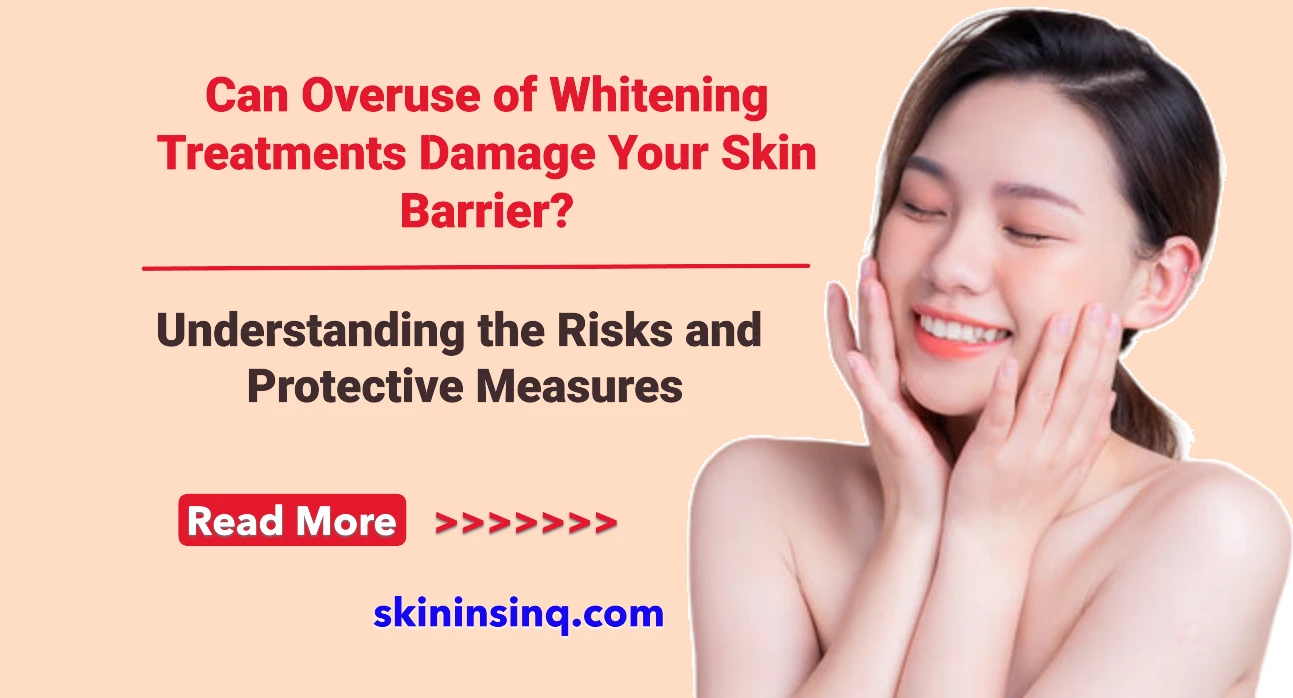Can Overuse of Whitening Treatments Damage Your Skin Barrier? Understanding the Risks and Protective Measures
Can Overuse of Whitening Treatments Damage Your Skin Barrier? Understanding the Risks and Protective Measures
Skin whitening treatments have become increasingly popular across the globe, often promising a brighter, more even complexion. While occasional and dermatologist-approved use may help manage hyperpigmentation and dark spots, overusing such products can pose serious risks to the skin’s health—particularly its natural barrier. The skin barrier is a protective shield made up of lipids, natural oils, and cells that protect against pollutants, bacteria, and moisture loss. Repeated use of harsh whitening agents can weaken this vital barrier, leading to a host of dermatological issues.
How Whitening Treatments Affect the Skin
Most skin whitening products work by reducing the production of melanin, the pigment responsible for skin color. Common active ingredients include hydroquinone, mercury compounds, kojic acid, arbutin, and vitamin C derivatives. While some are relatively safe when used in moderation and under medical guidance, others—especially mercury and high concentrations of hydroquinone—can be damaging with long-term use.
When applied excessively, these substances can strip the skin of its natural oils, disrupt the pH balance, and interfere with the renewal of skin cells. This weakens the skin barrier, making it more prone to dryness, irritation, sensitivity, redness, and even infections.
Signs Your Skin Barrier Is Damaged
If you are overusing whitening products and notice any of the following signs, it may indicate a compromised skin barrier:
-
Persistent redness or inflammation
-
Tightness or a feeling of dryness
-
Increased breakouts or sensitivity
-
Peeling or flaky skin
-
A burning or stinging sensation after applying skincare products
These symptoms suggest that the outermost layer of your skin—the stratum corneum—is no longer functioning properly as a protective barrier.
Long-Term Consequences
Beyond immediate irritation, chronic overuse of whitening treatments can lead to post-inflammatory hyperpigmentation, where the skin becomes darker due to inflammation. Ironically, this worsens the very problem users are trying to treat. In severe cases, especially with unregulated products containing mercury or steroids, users may develop exogenous ochronosis, a bluish-black discoloration that is difficult to reverse.
Additionally, a weakened skin barrier makes the skin more vulnerable to environmental stressors, UV radiation, and allergens, accelerating the aging process and increasing the risk of chronic skin conditions like eczema or dermatitis.
Protective Measures and Safer Alternatives
To prevent skin barrier damage, follow these tips:
-
Limit the use of whitening products and avoid combining multiple strong agents.
-
Consult a dermatologist before beginning any skin lightening regimen.
-
Use gentle cleansers, moisturizers with ceramides, and barrier-repairing ingredients like niacinamide and hyaluronic acid.
-
Always apply a broad-spectrum sunscreen with SPF 30 or higher to protect against further pigmentation and barrier damage.
-
Consider natural brightening alternatives such as licorice extract, niacinamide, or vitamin C serums.
Conclusion
While the desire for clearer, more radiant skin is understandable, it’s crucial to use whitening treatments responsibly. Overuse can severely damage the skin’s protective barrier, leading to long-term issues that are far more difficult to treat than pigmentation itself. Prioritizing skin health, seeking professional advice, and using barrier-friendly products will always yield better, safer results.

Related Blog
What Causes Oily Skin and Can It Be Managed Naturally? Exploring Root Causes and Gentle Solutions
Aug 2, 2025 by Admin
General
What Are the Signs That You Have Sensitive Skin? Key Symptoms to Help You Identify This Delicate Skin Type
Aug 1, 2025 by Admin
General